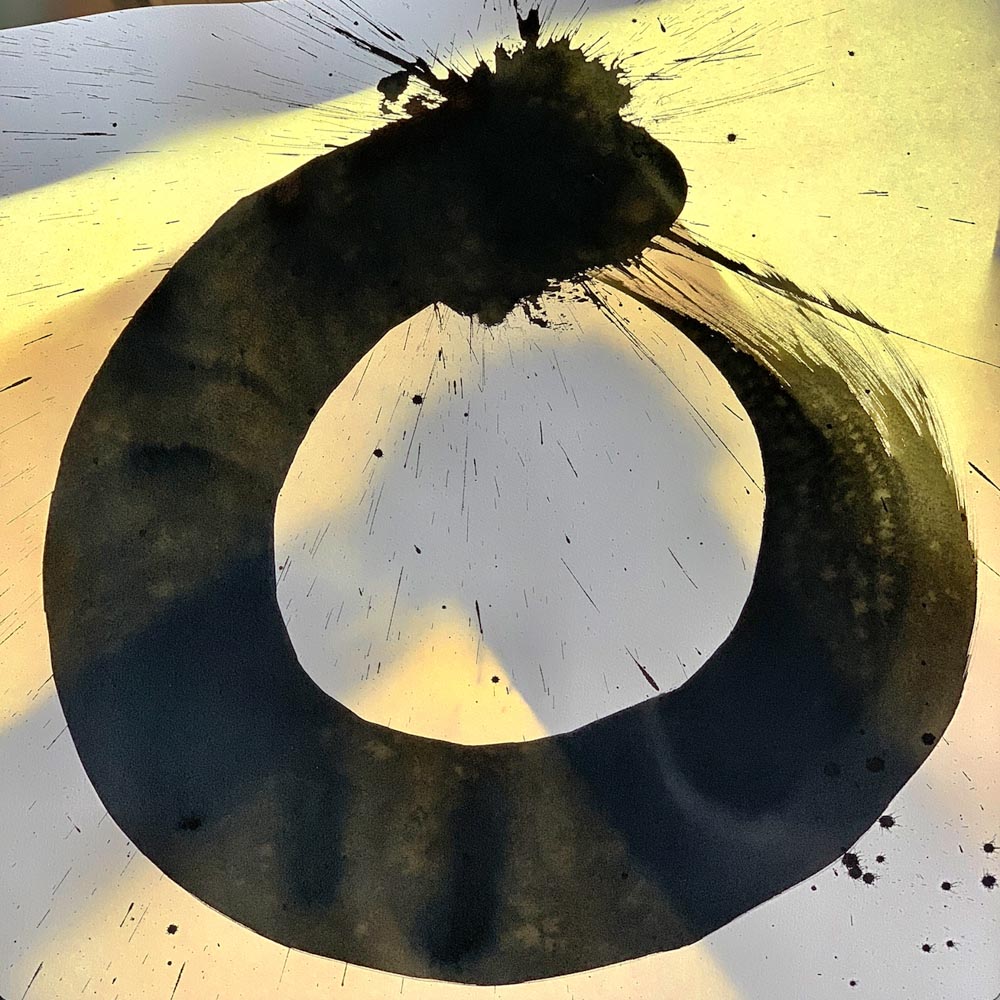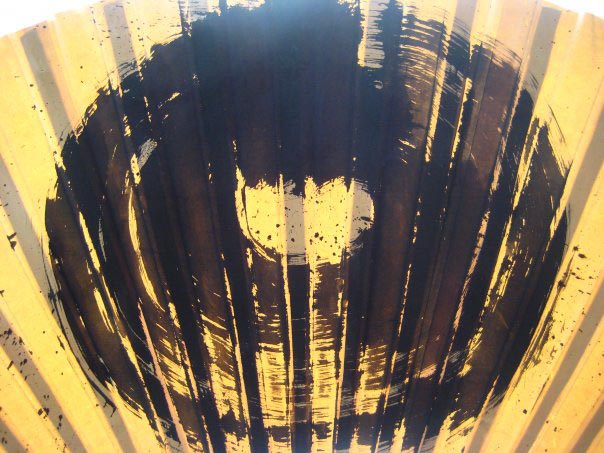
It’s Not So Much About What’s There, or What’s Not There—It’s the Intention of the Movement; the Imprint That it Makes. And What the Viewer Holds Forever.
As designers, we think about the statement of our design solutions—and the impact and memorability of the work. And—in the brands that we build, in memory—it’s what holds the eye of attention, and then, contrary to these sentiments: what is forgotten.
For us, it’s about creating solutions that are memorable,
unforgettable work has staying power.
Legendary.
In the rare book library at GIRVIN, there’s a fan that I picked up in Seattle’s proverbial UDistrict. I have had the fan for 40 years, and some time back I’d planned to draw something on it. This is a large bamboo and washi fan—probably from Japan.
Finally, I was thinking—a circle. But not any circle, it needed to be a brush-drawn circle—on the curved array and wavering blades of the fan.
As I drew that, I was thinking about the impossible cartography of its black-stroke geography—and, like everything, any drawing, any stroke, it’s about what’s there.
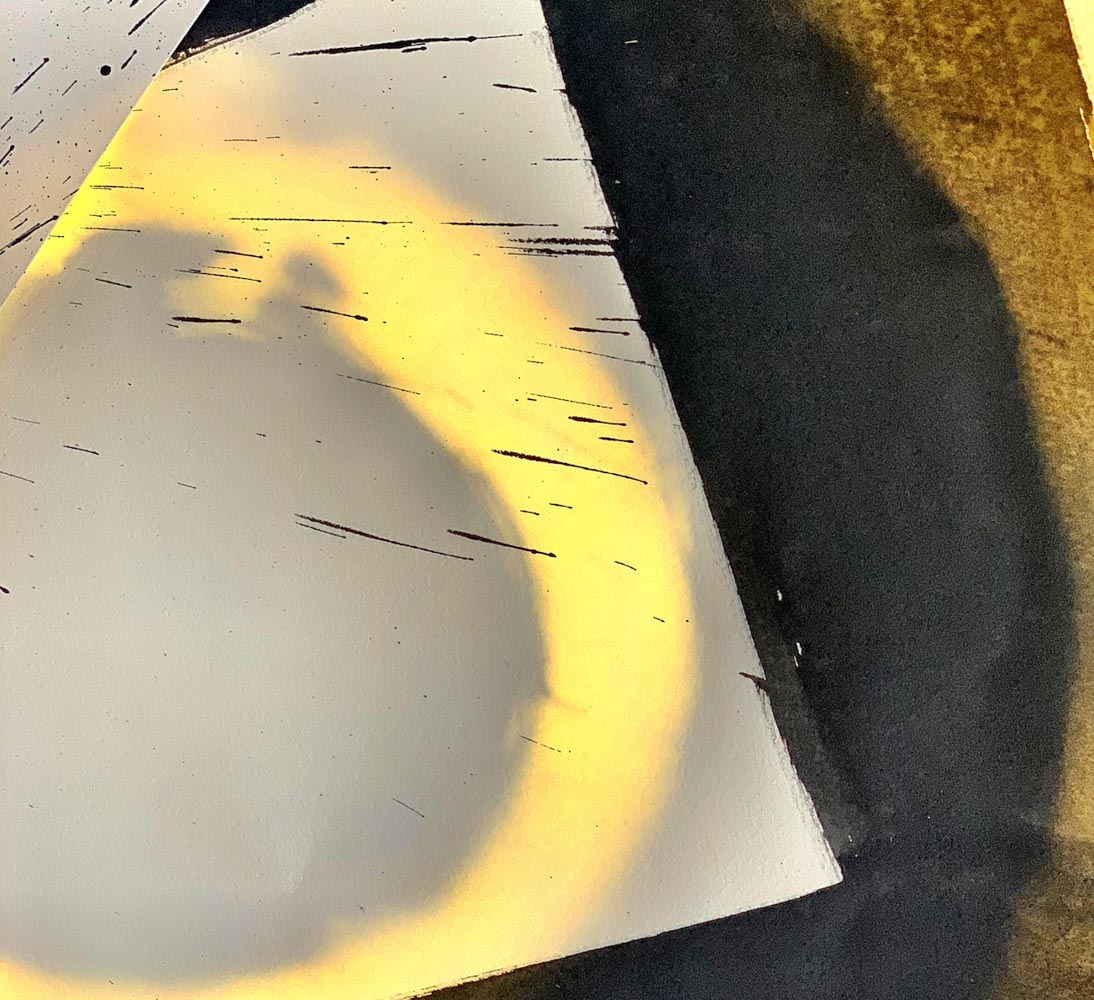
And not there.
The black makes the white; and the white makes the black. Thinking about about the metaphor of the work of design—it’s a 2000 year old Latin expression—signum, “the mark,” a designation, but in the realm of visualization, any mark is the sign of what is seen, and what is not seen. In our history, that could, for example, Tableau, the dataviz tool the newly visualizes content—the solution plays to forms with stems, counters and curves which make the form, partially on what’s not there.

In any work, it is always about the meditative practice that each of us employs—how we think about the meaning of the work, which brings us back to the fan—a symbol of the work, drawn and undrawn. That wafted breath of new ideas.
The Fan.
Opened—it spreads its wings as a breeze.
The stroke of the beginning and the drafting of ending, that which starts, that which completes, and that which holds the place between.
It’s about moving, the breeze of the storytelling, unfurled—it opens wide to array its geometric patterning; and contemplating this, and writing about studying the myriad objects that one brings in any journey.
And in deed, in the end, what of them —if not all—shall be discarded? They all go that way. A way. Ways. You move forward—with a fan of your own making— and you move out, and on, and away, to other things.
I have seen and explored decades of design. I’d think about the idea of design as signature, a signing, a script, a gesture that extends from the sight, the mind, the intuition, the arms, the wrist and fingertips; and the lines are drawn, the spinning gesture flows.
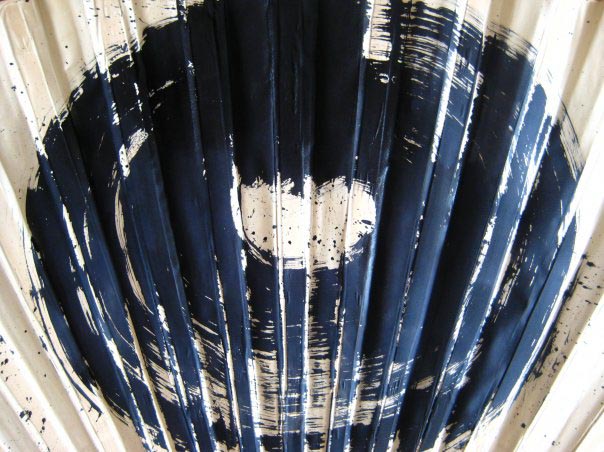
The full stroke, drawn—and the movement in: closer. The geography begins to emerge, the cartography of calligraphy.And closer, seeing what is white, and what is black.
Drawing, you’re seeing both, seeing neither.
What I wonder about is the gesture that is at the beginning, and the stroke-work that is in the end, that which starts, and that which ends. In searching through collections of objects that go back to my college days, the 70s—I found this old fan—large, more than a yard across.
Once on walls, long back, it was stored, hidden, yellowing in the transitioning of the solar days, the patina of molecules, battering the washi, Japanese hand-made paper of a half century back. I found it, blew off the dust. Opened it out, as a fan—and the dust sparkled in the softening tale light, end of day.
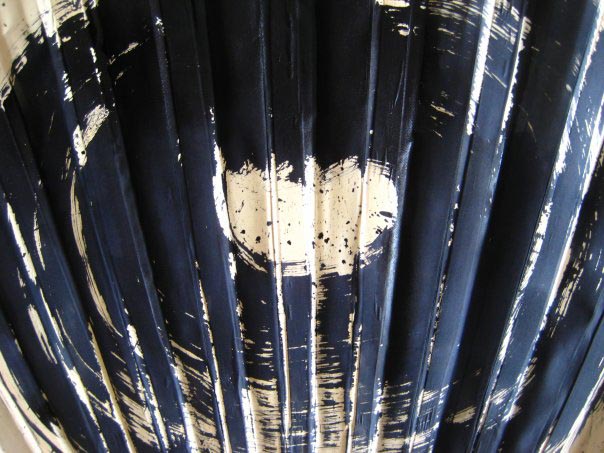
And closer, the landscape of the white, the black, emerges, the brush rippling over the tines of the bamboo blades, encased in Japanese handmade paper.
I set the fan down, splayed. And taking out a huge brush for laying roofing tar, I drew that circled stroke, the ring of bone, one giant turning, with a bucket of old ink for the drawing.
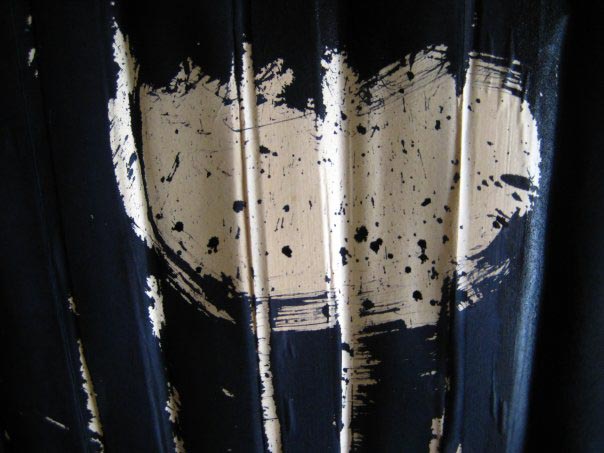
Closer, the portal opens, the vortex drawn, in. Closer. In.
And what that stroke is finding and seeing not only the one — the black stroke, but two, the stroke of absence — that which is not drawn upon, that which lies between the brush and the ink and the paper — drawn, and the smoked, spattered white of that which is untouched, vapor in absence. Quiet.
The passage—moving with the fan—in drawing on that object, there was a completion that took me back 40 years to the heart of my beginning, my opening, to learning about the beginning stroke, the closing stroke — the drawing that is the one and the finish, at the same time. While you draw black, you look at the white that is emerging.
And you move in.
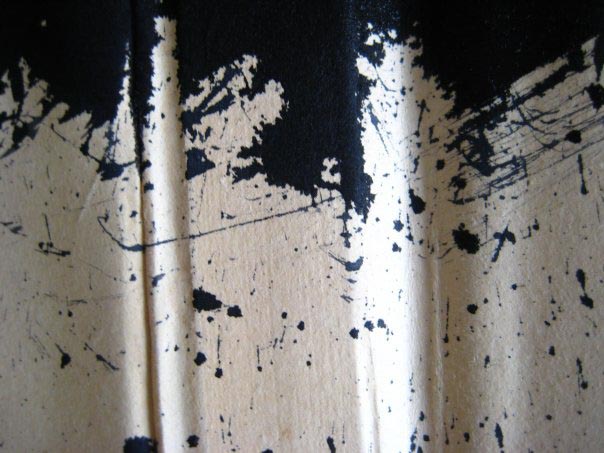
Crows fly, storms are cumulating.
And the viewer moves in.
And further.
Into the mystery of what might be found.
Lightness. Darkness. And the geography of between.
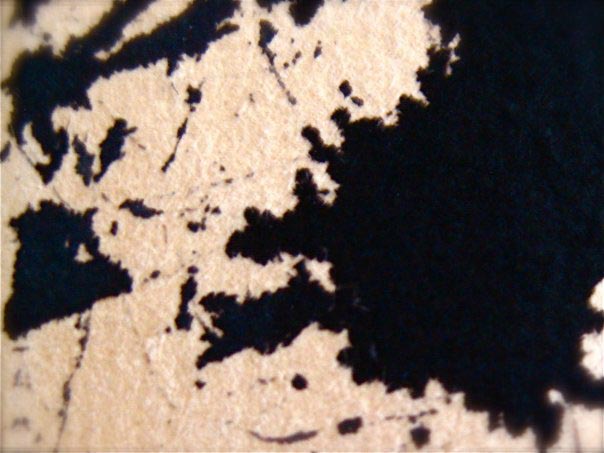
As a designer, I’m thinking about the work as a philosophical exploration—as a designer of marks, patterns and applications to objects: buildings, packages, interiors—it’s always about the seen and the unseen, the story that is there, and the story that isn’t. What you say, and what you don’t say.
Like haiku, perhaps.
More important—what is never forgotten?
Meet up sometime?
––––––––––––––––––––
wishing well >
Tim
GIRVIN | Strategic Brands | seattle, ny, bay area, tokyo
digital | built environments by Osean | theatrical branding
waves | art | talismanika™
Projects in strategy | story | naming | messaging | print |
identity | built environments | packaging |
social media | websites | interactive
Keep
drawing.
